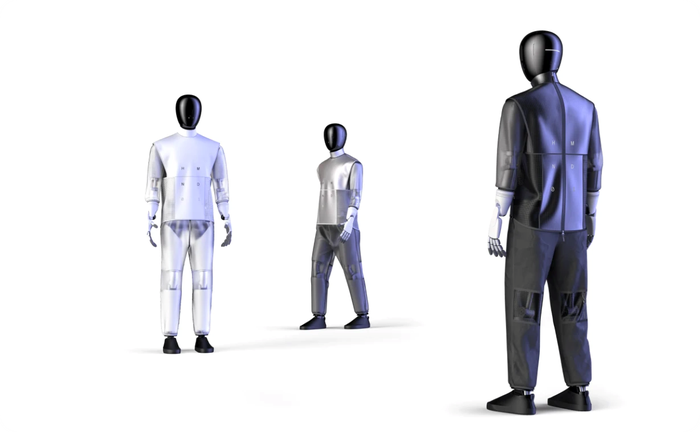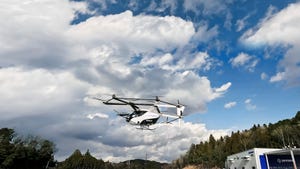In an Age of Digital Transformation, Your Customer’s Experience Matters MostIn an Age of Digital Transformation, Your Customer’s Experience Matters Most
Five years from now, are you going to ask yourself whether your industry was disrupted, or whether you helped disrupt your industry?
November 30, 2016

Ronald van Loon, director of Adversitement, a Dutch data consultancy firm, says a big part of the answering the above question lies in how well you relate to your customers. The vast majority of people who buy a product—whether it is digital or physical—view it as a commodity, van Loon says. “They could easily switch to another product or brand.”
Technology companies face few good options when attempting to attract and retain customers. They can compete based on features, but rivals can step in quickly copy them. Or vendors can compete based on advertising, but risk being outspent by a well-heeled rival. Or companies can wage a price war that cuts into their bottom line. Or they could work to create a comprehensive platform—like Amazon, Facebook, Uber, and Airbnb. But few companies succeed in doing that.
An important part of being a disruptor is optimizing your customer journey. “You need a foundation to collect data, process data, and provide insights—not only for a single department. That foundation should extend across all of the departments in your organization,” van Loon says.
Understanding Customer Experience with Anna
To illustrate the power of a customer experience in the digital age, van Loon tells the story of Anna, a citizen of Amsterdam. One day in 2005, Anna decides to go shopping downtown, but parking can be a nightmare in Amsterdam. “It takes her 40 minutes to find a parking spot,” van Loon says. When she finally finds one, she then has to locate a parking meter. Finally, she spots one 300 meters away but realizes that it doesn’t work. Anna finds another meter and puts five Euro coins into it, which is enough to cover 45 minutes’ worth of parking. But she also has to enter her license plate number into the machine to validate the parking receipt. She finally gets her receipt, puts it on her dashboard, starts shopping. “But one hour later, she thinks to herself: ‘damn! I forgot how much time I have left on the meter,” van Loon says. “She runs back, but can’t find the car at first because all of the streets look practically the same. Finally, she sees that a wheel clamp lock on her car,” he says. Anna calls the parking call center, and they say: “I’m sorry, but the only way for you to have your car back is to pay 350 Euros. Once you pay, we’ll send someone over in two or three hours who can remove the lock.”
Related: 50 of the Top IoT Authorities on Twitter
Now, consider an alternate scenario. It is 2015, and Anna decides to go shopping downtown and uses an app to find a parking spot quickly. After shopping for an hour and a half, Anna returns to her car and drives home. “After she returns home, she sees an overview on her phone of how much she paid for parking and where she parked,” van Loon says. It’s just a matter of transferring data. “The local government has a nice path to build a relationship with their customers,” van Loon explains. When Anna downloaded the app, they know many of her personal details like her license plate number, so there wasn’t a need for her to enter it. She gives her personal details to the local government in exchange for a service. The local government knows when and where she parked and can make use of this data and they can also do real-time auditing to prevent fraud.
This example illustrates how data can support an organization goal of continually improving customer experience. “If your technology isn’t relevant or if you aren’t working to improve customer experience, it doesn’t make sense,” van Loon says.
The Customer Improvement Project
Companies using Internet of Things technology have unique capabilities to understand their customers, but a common pitfall is to fall in love with technology at the expense of customer experience. “With IoT, you have all of this sensor data but the question: ‘how much data do you really need and from which types of sensors?’ Van Loon asks. He recommends mapping the customer journey and identifying a part you can help to improve. “Then, you can think about which one or two data streams you need for that,” he says. “Later, you can start thinking about adding a third or fourth data stream to continue to improve your customer experience.” This type of analysis should precede conversations regarding what types of technology to invest in or whether you want to build a Hadoop cluster or something else, van Loon says. “You don’t want to start the data collection first and then ask later: ‘how can I use it?’” he explains. “In the end, the most successful projects start small based on a business perspective instead of a technical and data collection perspective.”
To learn more about Ronald van Loon’s ideas, follow him on Twitter and LinkedIn.
About the Author
You May Also Like





